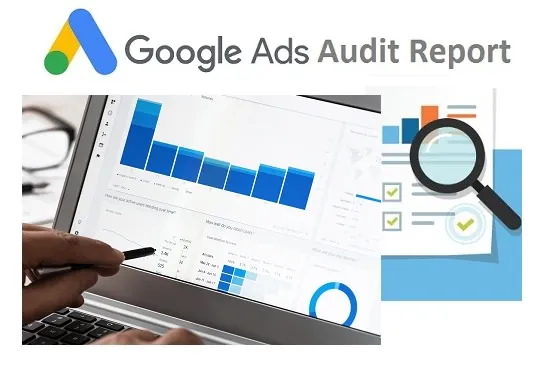Your Google Ads account is a living, breathing entity. It’s constantly changing with new search trends, competitor strategies, and algorithm updates. Without a regular, thorough audit, your campaigns can become bloated, inefficient, and, most importantly, a drain on your budget.
Auditing your Google Ads account isn’t just about spotting errors; it’s about uncovering hidden opportunities to boost your return on investment (ROI). It’s a systematic process that transforms your ad spend from a guessing game into a strategic, data-driven powerhouse. So, how do you do it? Let’s dive into a professional’s checklist.
Step 1: Lay the Foundation – Review Your Goals and Tracking
Before you click into a single campaign, you need to understand what “success” looks like.
Revisit Your Business Goals
Are your Google Ads objectives still aligned with your overall business goals? Have your target audiences or product lines changed? What conversion actions are most important: purchases, form fills, phone calls, or something else?
Validate Your Conversion Tracking
This is the most critical step. If your tracking is broken, all your data is meaningless.
- Confirm that all your key conversion actions (e.g., “Purchase,” “Lead Form Submit”) are firing correctly.
- Check if you’re tracking and attributing the right conversions.
- Ensure you have conversion values set up, especially for e-commerce, to accurately measure ROAS.
Step 2: Analyze Your Account Structure
A well-organized account is the backbone of a successful Google Ads strategy.
Campaign Segmentation
Are your campaigns logically separated? Best practices include segmenting by business objective (e.g., branding vs. lead generation), product line, or service.
Ad Group Organization
Are your ad groups tightly themed? A common mistake is having too many keywords in a single ad group. Ideally, ad groups should contain a small number of closely related keywords to ensure high ad relevance.
Naming Conventions
Are your campaigns and ad groups consistently named? A clear naming system makes it easy to filter, navigate, and analyze data.
Step 3: Deep Dive into Campaign & Ad Group Performance
This is where you get into the weeds of the data to find what’s working and what’s not.
Keywords and Search Terms
Search Query Report
This is your gold mine. Review it to find new, high-potential keywords to add and irrelevant search terms to add as negative keywords. This prevents wasted ad spend.
Keyword Performance
Pause or adjust bids on underperforming keywords with a high cost-per-click (CPC) and low conversion rate.
Negative Keywords
Use shared negative keyword lists across campaigns to efficiently block irrelevant traffic.
Ad Copy and Creative
Ad Relevance
Check your ads’ relevance to the keywords in the ad group. The more relevant, the higher your Quality Score.
A/B Testing
Are you continuously testing new ad headlines, descriptions, and calls-to-action? Responsive Search Ads (RSAs) are a great way to do this. Make sure you have enough assets and an “Ad Strength” of at least “Good.”
Ad Extensions
Are you using all relevant ad extensions (sitelinks, callouts, structured snippets, etc.)? They increase your ad’s visibility and click-through rate (CTR).
Bidding Strategies and Budgets
Strategy Alignment
Does your bidding strategy (e.g., Target CPA, Maximize Conversions, Target ROAS) align with your campaign goals?
Budget Allocation
Is your budget allocated to your best-performing campaigns? Don’t be afraid to shift funds from underperforming campaigns to those that are driving results.
Audience Targeting
Audience Insights
Are you using audience signals and observations to understand who is converting? Use this data to create bid adjustments for high-value audiences.
Remarketing
Are you running effective remarketing campaigns to re-engage users who have previously visited your site?
Step 4: Evaluate Your Landing Page Experience
Your ad can be perfect, but if the landing page is poor, you’re just throwing money away.
Relevance
Does the landing page content directly relate to the ad and the user’s search query?
User Experience
Is the page easy to navigate, with a clear call-to-action (CTA)? Is it mobile-friendly and fast-loading?
Trust Signals
Does the page include testimonials, security badges, or other elements that build trust?
Step 5: Review the Account’s Health
Look at the big picture to spot long-term trends and potential issues.
Change History
Review the account’s change history to see what changes were made and if they correlate with any performance shifts. This is a crucial step if you’ve recently inherited an account or if multiple people are managing it.
Quality Score
This is a key metric that impacts your ad rank and cost. A low Quality Score (below 7/10) on a core keyword is a major red flag that requires a deeper look into ad relevance, expected CTR, and landing page experience.
Impression Share
Check your impression share to see if you are missing out on potential traffic. Lost impression share due to budget or ad rank can highlight opportunities to increase your bids or improve your Quality Score.
Conclusion
Auditing your Google Ads account is not a one-time task but a continuous process crucial for maximizing your return on investment. By systematically reviewing your goals, refining your account structure, and scrutinizing campaign performance from keywords to creative, you can transform your ad spend from a guessing game into a strategic, data-driven investment. A professional audit uncovers hidden inefficiencies, reveals new opportunities for growth, and ensures your campaigns are always aligned with your business objectives. Regular, meticulous audits are the key to building a resilient, high-performing Google Ads strategy that drives sustainable success and profitable growth.








